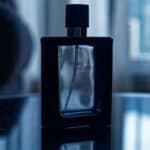Yes! Aluminum foil is generally safe to use in the oven. Most home cooks or chefs use aluminum foil for its convenience and versatility. It can also help with cleanup and pan burns (a godsend around Thanksgiving). Foil just happens to be a very inexpensive, common, and ultra-useful tool for both cooking and baking,
And it’s not just the cooking part. You can use aluminum foil as an easy way to cover dishes, line trays, or wrap food. The main thing you want to be careful of with foil in the oven is to make sure it doesn’t come into contact with the oven’s heating elements since this can cause a fire risk or damage to the oven.
Aluminum foil should also never be used to line the bottom of the oven, as it can adhere to the oven floor or obstruct proper heat circulation. Instead, it’s safer to use aluminum foil when it’s placed on an oven-safe dish or for wrapping food, which helps retain moisture and cooks the food evenly. By keeping the foil at a distance from direct heat sources and using it to cover or contain food, cooks can utilize aluminum foil in the oven without undue risk.

Using Aluminum Foil Safely In Your Oven
Aluminum foil is a handy kitchen tool. But is it always safe to use in the oven? Here’s what you need to know:
When It’s Safe
Aluminum foil can offer several advantages in the oven:
- Even Heat Distribution: Placing foil under baking sheets can help heat spread more evenly for consistent baking results.
- Protecting from Drippings: Lining pans with foil makes cleanup easier, preventing spills from baking onto your cookware.
- Keeping Food Moist: Wrapping meats or vegetables in foil can help them retain moisture while cooking.
When to Be Cautious
While safe in most cases, there are some things to keep in mind:
- Avoid the Oven Bottom: Never place foil directly on the bottom of your oven. It can block heat flow, damage the heating element, and even melt and leave a permanent residue.
- Acidic Foods: Limit contact between aluminum foil and highly acidic foods (like tomatoes or citrus). The acid can react with the aluminum, causing leaching.
- High-Heat Broiling: The extreme heat of a broiler can cause foil to ignite, creating a fire risk.
Best Practices
| Tip | Description |
|---|---|
| Use heavy-duty foil for most baking purposes. | Thicker foil is less likely to tear or leach when used with heavier dishes. |
| Avoid lining oven racks with foil. | This can disrupt airflow in the oven. |
| Opt for parchment paper or silicone liners for acidic foods. | These materials are better choices for highly acidic dishes. |
By following these tips, you can safely use aluminum foil in your oven to make cooking and cleanup a breeze!
Key Takeaways
- Aluminum foil is a common kitchen tool for oven use, suitable for covering dishes and wrapping food.
- Proper placement of aluminum foil in the oven is crucial for food safety and oven maintenance.
- Avoid placing aluminum foil at the oven’s bottom or close to heating elements to prevent fires.
Best Practices for Using Aluminum Foil in the Oven
When it comes to oven use, aluminum foil is a versatile kitchen staple. It aids in heat distribution and keeps food moist. However, effective and safe usage is key.
Understanding Aluminum Foil and Its Properties
Aluminum foil has two sides: a shiny one and a dull one. People often debate which side to use for cooking or baking. The shiny side reflects heat, while the dull side absorbs it. However, most experts agree that this difference is negligible in ordinary cooking, so either side can be used.
Safety Concerns and Guidelines
Safety is vital when using aluminum foil in the oven. Never let foil touch the oven’s heating elements, as it can melt or spark a fire. The Food and Drug Administration suggests using aluminum foil to line trays, cover food, or wrap items. Always maintain a gap between the foil and the oven walls.
Optimal Uses of Aluminum Foil in Cooking
Aluminum foil excels at trapping heat when used to cover baking dishes. This can keep your food moist and cook it evenly. When grilling, foil packets can protect food from direct flames. For heat distribution, placing foil over thicker parts of meat can prevent overcooking.
Alternatives and Substitutes for Aluminum Foil
If concerns about aluminum exposure or risks arise, alternatives exist. Baking sheets or parchment paper can line trays. Non-stick aluminum foil is an option when less oil is preferred. Wax paper is suitable for cold items but not oven use. Each substitute serves a purpose depending on the cooking need.







